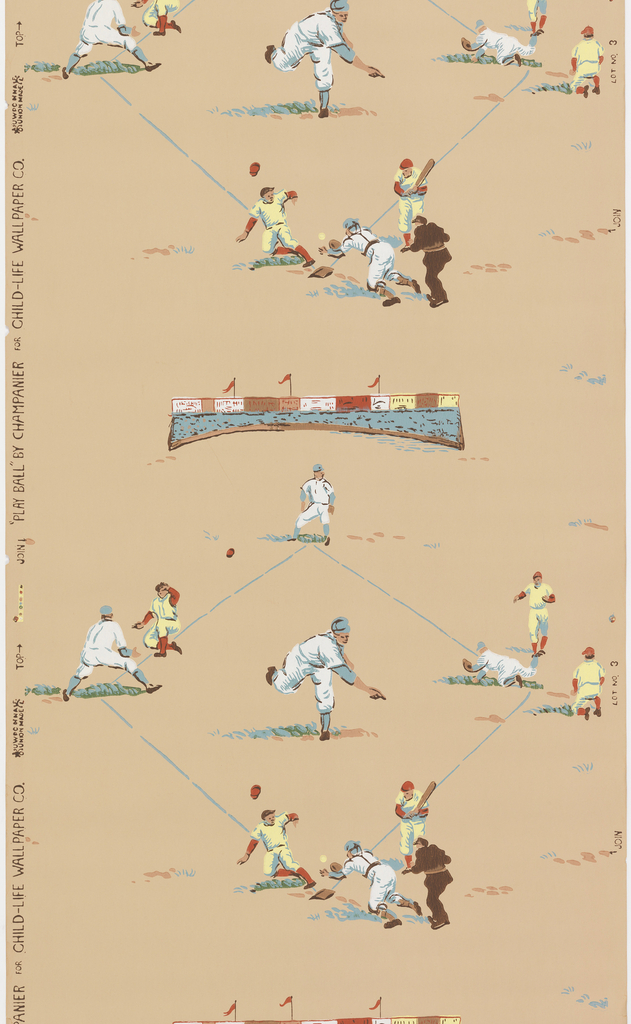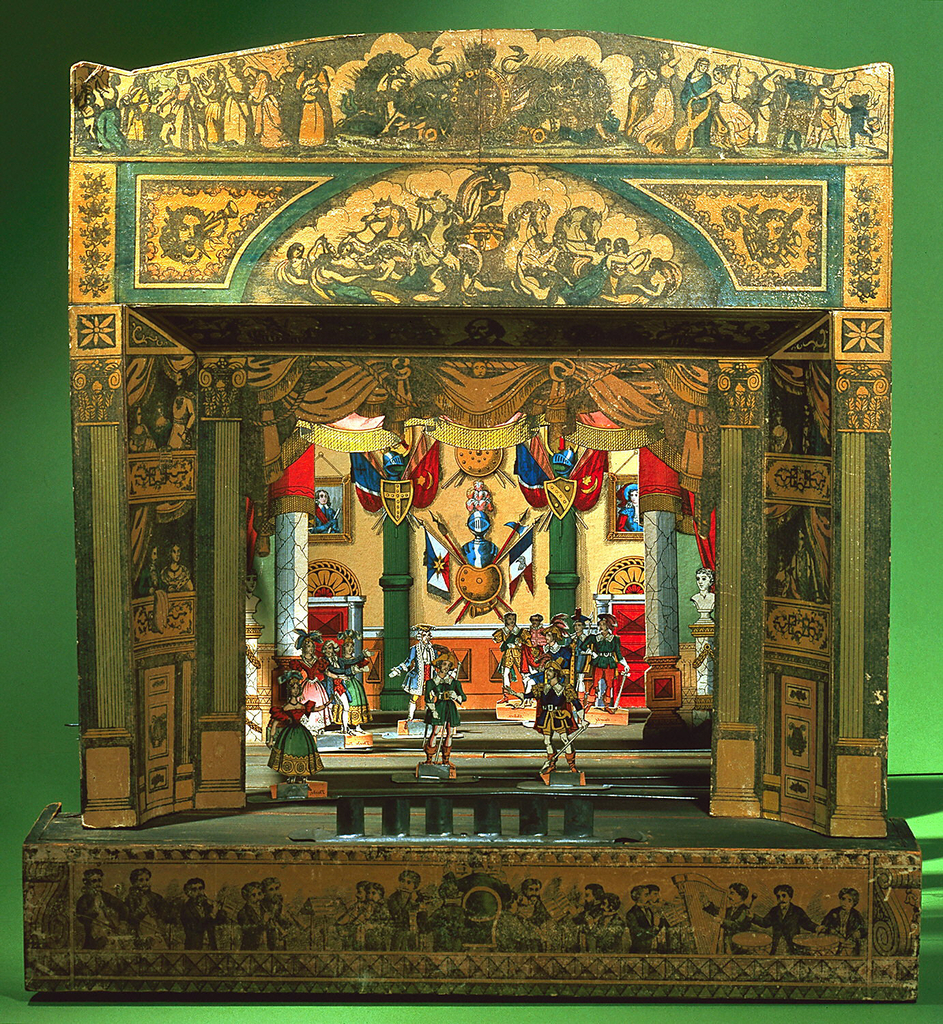This post was originally published January 18, 2013 and is being reposted in a belated commemoration of A.A. Milne’s birthday and the creation of this wonderful story and its beloved characters. This children’s frieze captures the adventures of Winnie the Pooh and Christopher Robin. This is a woodblock print and was produced within a year...
Early children’s wallpapers were designed to be educational, with many based on popular books. This wallpaper illustrates four scenes from William Cowper’s poem The Diverting History of John Gilpin written in the 1780s. The story contains some silly antics that would capture the fancy of children. The nutshell version of the tale goes like this:...
This week’s posts feature case studies from Cooper Hewitt’s Digital Collections Management Project, a conservation survey of born-digital and hybrid objects in the permanent collection. The two-year project was coordinated by an in-house team of conservators, curators, and registrar, and was conducted by digital conservation specialist Cass Fino-Radin and his team at Small Data Industries....
I have long admired the wide children’s borders, also called friezes, designed and produced in the early twentieth century, prior to the Great Depression in 1929. Cooper Hewitt has a fair collection of these with the most popular being Winnie the Pooh, produced ca. 1926, coinciding with the release of the book by A.A. Milne...
Can a children’s toy function as a subversive agent of anti-capitalism? Possibly. The Free Universal Construction Kit is a set of design plans for nearly 80 two-way adapters capable of joining together individual parts from ten popular brands of construction toys, allowing for interoperability between otherwise incompatible construction toy parts.[1] Available for download at no...
With the culmination of baseball season upon us, it seems appropriate to turn our attention to this cheerful wallpaper from mid-century. Play Ball shows a single repeat of an ongoing baseball game printed on a light tan background. The scene is extremely dynamic as each figure engages with the action on the field. At home...
From the time she arrived in the United States from Budapest in 1913, Ilonka Karasz was a force in New York City’s creative circles. Karasz’s oeuvre is diverse; over the course of her sixty-year career, she created furniture, textiles, silver, wallpapers, ceramics, and illustrations. Between 1925 and 1973, Karasz illustrated 186 covers for the New...
Peepers is a wallpaper border designed with children in mind. It is less infantile in design than other children’s papers so will not be so quickly outgrown and can be and can be paired with another wallpaper or used alone on a painted wall to create an inexpensive decoration. The amorphous figures get smaller as...
This delightful sidewall for a nursery is the work of Dorothy Hilton, a late Victorian designer of which sadly little is known. She was based in Birmingham and had a sister Agnes who was also a designer. Articles in the Studio record that she exhibited at the 1899 National Competition of the South Kensington schools...
The Wobblies show their wobbliness, which is cleverly illustrated on their box by faint wavy blue lines. Interestingly, there are two definitions of the word wobbly. The first is “inclined to wobble; shaky.” A Wobbly (capitalized) is also “a member of the Industrial Workers of the World, an international, revolutionary industrial union founded in Chicago...
During the 1920s and 30s, child-rearing experts pointed out the negative effects of mass recreation, especially movies, to the growth of American children. They argued that as passive spectators, children would likely bring home images of glamour and a sense of the social power of consumer goods after attending movies since what they saw in...
As one of the best-known British decorative artists of the Arts and Crafts Movement, Walter Crane’s design touched upon the fields of books, textiles, wallpaper, stained glass, and ceramics. Children’s education played a considerably important part in the subject matter of Crane’s book illustration and wallpaper designs. In 1875, Crane (1845-1915) was commissioned by Jeffrey...
Imaginative author Robert Louis Stevenson wrote in his 1884 essay, A Penny Plain and Twopence Coloured, “If you love art, folly, or the bright eyes of children, speed to Pollock’s…”[1] The toy theatre was a beloved pastime in 19th-century England that appealed to the creativity and craftsmanship of children and adults. Benjamin Pollock inherited his...
This is a charming children’s wallpaper that would also be appropriate for a powder room. The design is naively styled with its cast of three leopards, exotic flowers, and lush foliage. The leopards are performing various acts of lounging or exploring, with the one directing his gaze directly at the viewer. The design is quite...
This charming children’s wallpaper illustrating the tale of Alice in Wonderland contains many of the delightful characters we remember from childhood: the Mad Hatter, Tweedle Dee and Tweedle Dum, Queen of Hearts, the caterpillar, and of course Alice, both big and small. This was designed by Tony Sarg, artist, illustrator, puppeteer, and balloon designer for...














